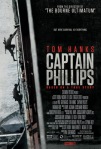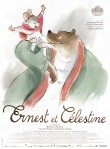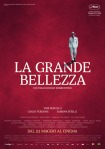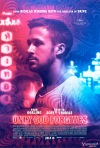By Alan Mattli
The end of an eventful year is upon us; the time has once again come to reflect on what we have seen, read, or heard over the past twelve months and to pass judgement on what has moved and enthused us the most. Speaking as someone who mostly deals in film reviews, 2013 has been an exceptional year in terms of cinema, and limiting my list to a pantheon of ten works was an exercise in killing darlings. Still, these are the ten (plus seven) best movies I have seen this year – at least according to my current state of mind. However, it must be said that this list, as usual, is based on the films’ Swiss cinema release, which means that acclaimed releases like Upstream Color, 12 Years a Slave, The Wolf of Wall Street, or American Hustle do not feature not because of a lack of quality but because they have not been shown in Swiss cinemas yet.
HONOURABLE MENTIONS
Captain Phillips
The Briton Paul Greengrass is gradually becoming the prime annalist of the United States’ post-9/11 experience. After delivering what many consider to be the definitive cinematic work on the September 11 attacks (United 93, 2006), Greengrass now took on the story of an American cargo ship that was highjacked off the coast of Somalia in 2009. The resulting film, Captain Phillips, is at once a taut, gripping psychological study of the highjacked ship’s captain (the superb Tom Hanks) and his relationship with his captors and a highly intelligent, politically charged piece of geopolitical cinema.
Cesare deve morire
This riveting quasi-documentary about inmates of an Italian maximum-security prison taking part in a production of Shakespeare’s Julius Caesar not only ranks as a late-career highpoint for its sibling directors Paolo and Vittorio Taviani (82 and 84 years old, respectively), but also as one of the most daringly original Shakespeare adaptations in recent memory. By blurring fact with fiction (Are these edited shots from rehearsal genuine? Did this row really occur?), the Tavianis have created a fascinating meditation on art and how, if at all, it relates to what we call truth (a topic that was explored with similar success this year by Alain Resnais in Vous n’avez encore rien vu and Roman Polanski in La Vénus à la fourrure).
Ernest et Célestine
In a year of limited appeal in terms of animated films (Hayao Miyazaki’s The Wind Rises hasn’t opened in Switzerland yet), this beautiful French-Belgian co-production adapting the children’s stories of Monique Martin (aka Gabrielle Vincent) is a little gem. Centering around the friendship between Célestine, a mouse (voiced by Pauline Brunner), and Ernest, a bear (Lambert Wilson), the movie offers a heartwarming, thematically potent – but admirably subtle – tale of how prejudice, stifling social conventions, and desperate clinging to outdated and demonstrably misguided traditions poison the world. And with its magnificent water colour aesthetic, Ernest et Célestine is as artistically accomplished as it is pedagogically engaging.
Frankenweenie
Even though his most recent works (Alice in Wonderland, Dark Shadows) tend to be underrated, Tim Burton has yet to regain the inspiration that, in the 2000s alone, led to films like Big Fish or Corpse Bride. And it might very well be that Frankenweenie, his stop motion remake of the eponymous short film he made in 1984 about a loveable zombie dog inadvertently plunging suburbia into chaos, ends up being the start of his return to form. The writing is smart and often darkly funny, the old-fashioned animation style is effectively contrasted with a convincing 3-D treatment, and Burton’s trademark self-reflexivity – the (autobiographical) main character’s creation of monsters is paralleled with his creation of movies – is more poignant than it has been in years.
Leviathan
Faintly reminiscent of Georges Franju’s 1949 documentary short Le sang des bêtes on the abattoirs of Paris, this experimental film by Harvard anthropologists Lucien Castaing-Taylor and Véréna Paravel is set on a fishing trawler ravaging the fauna of the North Atlantic: thousands of fish and other marine animals are hauled aboard every day, where they are cut open and gutted, their unusable remains thrown back into the tide, where seagulls feast on them. But the directors, whose waterproof cameras continually capture truly stunning close-up images of dead fish, exhausted workers, and frenzied birds, are not intent on vilifying the fishing industry. Rather, Leviathan is an audiovisual marvel, a staggering piece of cinematic art that neither abstracts nor judges its subject, but illustrates the grandeur that is to be found in this world.
Quelques heures de printemps
The films of French director Stéphane Brizé are of a rigorously minimalist nature, but they never fail to elicit strong emotions from their audiences. Much like 2005’s Je ne suis pas là pour être aimé and 2009’s Mademoiselle Chambon, Quelques heures de printemps is an intense, taciturn, on occasion wryly funny take on family, responsibility, and identity, exemplified here by a conflict between an ex-convict (Vincent Lindon) and his mother (Hélène Vincent), who, after being diagnosed with cancer, chooses the route of medically assisted suicide.
Silver Linings Playbook
Following his 2010 sporting drama, The Fighter, the versatile writer-director David O. Russell once again shifted gears and presented audiences with a high-wired adaptation of Matthew Quick’s novel Silver Linings Playbook, an interesting mixture of legitimate drama and Hollywoodesque romantic comedy. Russell has been criticised for not being consistent enough in setting a tone and for tackling serious issues like mental health and economic strife with an ultimately all too buoyant attitude. But in a way, those are the strengths of this thoroughly engaging, superbly acted film: by highlighting both the tragic and the comic, by delivering the silver linings its main character (the great Bradley Cooper) so desperately craves, the film makes artistic abstraction feel true to life.
–––
THE TOP TEN
10
Oh Boy
True auteurist ambition has become quite rare in German-language cinema. All the more refreshing, then, is this narrative directorial debut from 34-year-old Jan-Ole Gerster. Set in the Berlin one might recognise from Sven Regener’s book Herr Lehmann (and Leander Haussmann’s eponymous film adaptation), Oh Boy tells the story of a day in the life of a twentysomething idler (Tom Schilling – perfectly cast), who is confronted with money trouble after his rich father cuts his allowance. Gerster’s film does not so much follow a stringent dramaturgy – the main quest seems to be the protagonist’s yearning for a cup of coffee – as it loosely ties together episodes from Berlin’s idiosyncratic alternative culture. But Oh Boy is more than merely a funny, off-beat look at a man unenthustiastically attempting to adapt to adult life: in the movie’s closing moments, an old drunkard’s (the fabulous Michael Gwisdek) breathtaking monologue about a childhood memory, which turns out to involve the 1938 Kristallnacht, gently reminds Tom Schilling’s Niko Fischer, as well as the viewers, of what atrocities lie at the base of this now free and tolerant Berlin. Is Gerster raising a moral point? Is he equating Niko’s faineance with the late Weimar Republic’s aimlessness? Is he decrying the intolerance his protagonist continuously meets? It’s questions like these, serious points lurking behind a laconically hilarious façade, that make Oh Boy one of the best German films in years.
9
Like Someone in Love
When one of the greatest, most accomplished directors working today ventures out of his comfort zone, it is often worth taking note. After filming outside of his native Iran for the first time in 2010 (the fascinatingly arcane Copie conforme, which is set in Italy), Abbas Kiarostami (Close-Up, Taste of Cherry, The Wind Will Carry Us) went on to take to Japan, where his latest work takes place. Focusing on a student/escort girl (a remarkable turn by Rin Takanashi) who one night befriends a geriatric academic (Tadashi Okuno), much to the chagrin of her abrasive boyfriend (Ryō Kase), Like Someone in Love‘s portrayal of its characters’ motivations is, similar to Copie conforme, arrestingly opaque, never explicitly stating what anyone is thinking, relying instead on looks and pauses in the often deceptively mundane dialogue. This is not a film intent on definitive answers but on raising questions, on pondering the implications of the story it relays. The power and grace of Kiarostami’s minimalistic cinematic vision is on full display here, carefully exploring the depths, the shallows, and the ultimate breakdown of human interaction.
8
Blue Jasmine
It seems like viewers and critics alike were premature when they declared that 2011’s Midnight in Paris was the best Woody Allen could offer at this point in his career. It was a diverting, highly accomplished exercise, no doubt, but two years on, Allen’s Blue Jasmine digs much deeper with its chronicle of Jasmine (the phenomenal Cate Blanchett), a discredited member of New York’s high society, trying to regain, or just maintain, her sanity whilst living with her lower-middle class sister (Sally Hawkins) in San Francisco. As is often the case in Allen’s cinema, neuroses play a substantial role here, but for once, they are not as much the butt of jokes as they are tragicomical reflections of Jasmine’s bruised psyche and unlikeable narcissistic character. Blue Jasmine mercilessly juxtaposes its titular protagonist’s fatuous delusions about her future with glimpses from her past, which was spent sipping martinis and looking presentable at the side of her Ponzi-scheming husband (Alec Baldwin). The film does contain an iota of topical satire, but at its core, it always remains a poignant character study that reaffirms Allen’s status as one of US cinema’s prime auteurs.
7
Only Lovers Left Alive
In his first film since his critically derided existentialist experiment, The Limits of Control (2009) – which this critic would term a minor masterpiece –, Jim Jarmusch (Stranger Than Paradise, Down by Law, Night on Earth, Dead Man, Ghost Dog, Broken Flowers), perhaps as an ironic comment on the often parodied Twilight craze, returns to the spotlight with, of all things, a vampire romance. Like so many of his films, Only Lovers Left Alive is a slow, lingering, slightly meandering, impressionistic mood piece about the ennui its characters feel and coolly endure. It centers around two vampires, Adam (Tom Hiddleston) and Eve (Tilda Swinton), whose undying love has survived the centuries, even though Adam’s depression – caused, as surmised by Eve, by his friendship with “Shelley and Byron and some of those French arseholes” – keeps getting worse. Jarmusch’s interest in a stringent plot is limited; instead he favours an episodic structure, saturated with a sense of cessation reminiscent of 1989’s Mystery Train, that highlights the film’s achingly beautiful tone, its playful references to film and literature, and its masterly compositions. Only Lovers Left Alive is yet another demonstration of the incomparable director’s virtuosity.
6
The Broken Circle Breakdown
This romantic melodrama, directed by the relatively unknown Belgian Felix Van Groeningen, is a little miracle, narratively speaking. Over the course of roughly two hours, catastrophe is heaped upon catastrophe, the film’s protagonists, the lovers Elise (Veerle Baetens) and Didier (Johan Heldenbergh), are confronted with inhuman sorrow and misery, starting with a fatal sickness that afflicts their six-year-old daughter. But despite all the heartache, the movie never collapses under the dramatic strain Van Groeningen’s script puts on it. Carried by its central motif, ethereally maudlin country and bluegrass music, The Broken Circle Breakdown is a powerful, highly emotional affair that turns love going sour, creeping fanaticism, shattering desperation, and, ultimately, death into a hauntingly beautiful cinematic poem.
5
La grande bellezza
If there was an award for films that celebrate the very medium of cinema, Paolo Sorrentino’s dizzying, Felliniesque two-and-a-half-hour spectacle would indubitably win it. La grande bellezza, “The Great Beauty”, is a rousing ode to Rome in all its ancient beauty, its frustrating shallowness, its strangely engaging decadence, seen through the eyes of the aging society journalist Jep Gambardella (Toni Servillo), who wanders the streets of the eternal city with elegant disinterest. On his “journey to the end of the night” (the movie’s epigraph quotes Céline’s famous novel), he encounters pretentious artistes, crooked businessmen, bizarre beauticians, seductive strippers, friendly magicians, and even a centenarian nun, whose holiness might just match that of Jesus Christ. To see La grande bellezza is to experience the power of cinema, to delve into a fascinating, fantastical, often grotesque world that, in spite of evoking Federico Fellini at every twist and turn, is original and steeped in a distinctive directorial vision. After a string of acclaimed features, including Le conseguenze dell’amore, Il divo, and This Must Be the Place, this work might just assert Paolo Sorrentino as Italy’s greatest contemporary filmmaker.
4
Only God Forgives
Nicolas Winding Refn’s Drive (2011) stands tall so far as one of the decade’s best, most awe-inspiring films. But when his follow-up work, Only God Forgives, premiered at 2013’s Cannes Film Festival, he felt the wrath, the jeer, and the derision from a vast majority of critics, who seemed to make a game of finding new superlatives to describe the perceived awfulness of Refn’s hyperviolent crime drama. This level of condescension is particularly despiriting because Only God Forgives is just as brilliant an achievement as was Drive. Intensifying its predecessor’s sparing reliance on plot, it ventures into old testament religious parable as it atmospherically recounts the events after the honour killing of an American drug dealer in Bangkok: the reluctant brother (Ryan Gosling) of the dead man (who raped a prostitute to death) is ordered by his mother (the horrifyingly chilling Kristin Scott Thomas) to exact revenge on the killer, only to discover that the murder was sanctioned by the God-like policeman Chang (the fantastic Vithaya Pansringarm). Refn, explicitly drawing on the work of Gaspar Noé (Irréversible, Enter the Void), who is mentioned in the credits, and Alejandro Jodorowsky (El topo, La montaña sagrada), to whom the film is dedicated, again proves himself to be an extraordinary stylist, with every frame constructed and composed to perfection.
3
Zero Dark Thirty
After offering a microcosm perspective of America’s post-9/11 war entanglements in 2008’s The Hurt Locker, Kathryn Bigelow broadened her scope in her weighty procedural on the international hunt on Osama Bin Laden under the leadership of the CIA. Zero Dark Thirty‘s stance on and portrayal of torture as a means of gathering information has been discussed, scrutinised, criticised, and decried – with even some of the film’s defenders calling it “borderline fascistic” –, but this has not been able to hurt its quality. Opening in 2003, Bigelow and author Mark Boal rigorously reenact the strategic and bureaucratic manoeuvres, the chasing after false leads, the dead ends, the setbacks (continued terrorist attacks) that led to the Navy SEAL raid of Bin Laden’s compound in Abbottabad, Pakistan, in May 2011 (which Bigelow superbly stages in real time). One can spend hours debating whether Zero Dark Thirty‘s take on history is immoral, cynical, matter-of-factly, or all at once, but in terms of cinema, it is a gripping and absorbing masterstroke.
2
Before Midnight
18 years ago, in Richard Linklater’s Before Sunrise, a young American named Jesse (Ethan Hawke) and a young Frenchwoman named Céline (Julie Delpy) met on a train from Budapest to Paris, started talking, and ended up spending a night in Vienna, during which they talked about love, life, and the possibility of true commitment. Nine years later, in Before Sunset, they bumped into each other in Paris, where they resumed their discussion and, it was implied, fell in love again. Another nine years on, Before Midnight finds them still together – but cracks have started to appear in their wholesome relationship. In its almost brutally honest insistence on looking beyond what others might call a happy “ending”, Linklater’s second sequel to his cult romance is an emotionally intense experience that is in turns uplifting and heartbreaking. But even though the third act has Jesse and Céline engage in their first ever on-screen spat, which seems to recall the arguing Austrian couple they made fun of in the first movie, Before Midnight doesn’t rule off what has been called “the greatest love story of a generation”. Instead, it finds the beauty of love weathered and tested, gracefully showing how, even after all those years, there are still things for Céline and Jesse to talk about, to joke about, to cry about. Before Sunrise‘s romantic idealism is still there, but it has since developed, and matured, into something even more sublime.
1
Gangs of Wasseypur
In a year where blogs and magazines were abuzz with the fundamentally flawed argument that “television is better than cinema” (apples and oranges) because of its possibilities in detailing processes and shaping characters, the title of Film of the Year goes to a movie that breaks through the constraints people think to see in the medium of the Lumières, of Méliès, of Griffith, and that, perhaps in a cruelly fitting twist, bombed at the Swiss box office, attracting not even 1,000 viewers, in spite of being released in two parts. The movie in question is Indian director Anurag Kashyap’s gargantuan crime epic Gangs of Wasseypur, which chronicles the fact-based but fictionalised feud, raging from the early 1940s to the late 2000s, between three clans fighting for supremacy in eastern Indian Wasseypur, now a suburb of Dhanbad, the country’s coal capital. Kashyap takes a little over five hours to tell this Godfather-like tale, introducing a plethora of characters and subplots along the way. But this depth (and width) of storytelling does not prove confusing; on the contrary, it allows the viewer to delve into a self-contained world existing outside of Bollywood conventions and clichés (even though at times Kashyap playfully borrows from Bollywood’s stylistic catalogue). Apart from its seemingly boundless narrative appeal, its often high-wired rhythm, its effective use of both traditional and contemporary Indian music, its black humour, and its disposition to be too loud, too violent, too overwhelming, Gangs of Wasseypur also delivers an engrossing take on recent Indian history, which governs the feud that ravages Wasseypur; from the success of the independence movement, which replaced British monopoly with gangster kingpins, to the recent rise of India’s economy and Kashyap’s starkly ambiguous final image of Mumbai’s Taj Mahal Palace Hotel, which was attacked by terrorists in 2008. This is cinema on a big scale, this is what the medium has to offer.


















